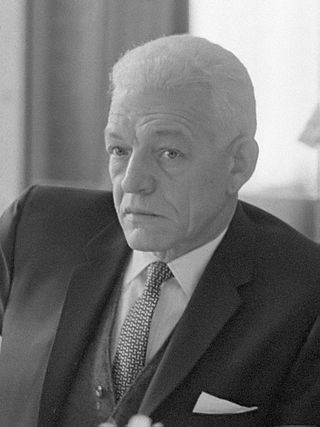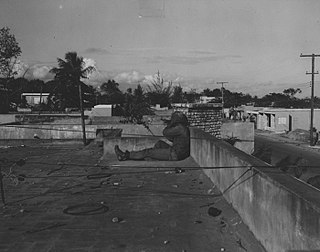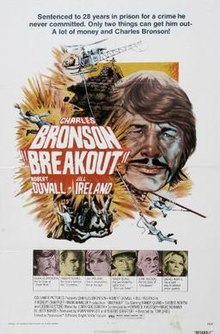
The Dominican Republic is a country on the island of Hispaniola in the Greater Antilles archipelago of the Caribbean Sea, bordered by the Atlantic Ocean to the north. It occupies the eastern five-eighths of the island, which it shares with Haiti, making Hispaniola one of only two Caribbean islands, along with Saint Martin, that is shared by two sovereign states. It is the second-largest nation in the Antilles by area at 48,671 square kilometers (18,792 sq mi), and third-largest by population, with approximately 10.7 million people in 2022, of whom approximately 3.3 million live in the metropolitan area of Santo Domingo, the capital city.

The recorded history of the Dominican Republic began in 1492 when the Genoa-born navigator Christopher Columbus, working for the Crown of Castile, happened upon a large island in the region of the western Atlantic Ocean that later came to be known as the Caribbean. It was inhabited by the Taíno, an Arawakan people, who called the eastern part of the island Quisqueya (Kiskeya), meaning "mother of all lands." Columbus promptly claimed the island for the Spanish Crown, naming it La Isla Española, later Latinized to Hispaniola. After 25 years of Spanish occupation, the Taíno population in the Spanish-dominated parts of the island drastically decreased through genocide. With fewer than 50,000 remaining, the survivors intermixed with Spaniards, Africans, and others, forming the present-day tripartite Dominican population. What would become the Dominican Republic was the Spanish Captaincy General of Santo Domingo until 1821, except for a time as a French colony from 1795 to 1809. It was then part of a unified Hispaniola with Haiti from 1822 until 1844. In 1844, Dominican independence was proclaimed and the republic, which was often known as Santo Domingo until the early 20th century, maintained its independence except for a short Spanish occupation from 1861 to 1865 and occupation by the United States from 1916 to 1924.

Santo Domingo, once known as Santo Domingo de Guzmán and formerly known as Ciudad Trujillo, is the capital and largest city of the Dominican Republic and the largest metropolitan area in the Caribbean by population. As of 2022, the city and immediate surrounding area had a population of 1,029,110 while the total population is 3,798,699 when including Greater Santo Domingo. The city is coterminous with the boundaries of the Distrito Nacional, itself bordered on three sides by Santo Domingo Province.

Joaquín Antonio Balaguer Ricardo was a Dominican politician, scholar, writer, and lawyer. He was President of the Dominican Republic serving three non-consecutive terms for that office from 1960 to 1962, 1966 to 1978, and 1986 to 1996.

Rafael Leónidas Trujillo Molina, nicknamed El Jefe ), was a Dominican military commander and was a dictator who ruled the Dominican Republic from August 1930 until his assassination in May 1961. He served as president from 1930 to 1938 and again from 1942 to 1952, ruling for the rest of his life as an unelected military strongman under figurehead presidents. His rule of 31 years, known to Dominicans as the Trujillo Era, was one of the longest for a non-royal leader in the world, and centered around a personality cult of the ruling family. It was also one of the most brutal; Trujillo's security forces, including the infamous SIM, were responsible for perhaps as many as 50,000 murders. These included between 12,000 and 30,000 Haitians in the infamous Parsley massacre in 1937, which continues to affect Dominican-Haitian relations to this day.

Dominicans are an ethno-national people, a people of shared ancestry and culture, who have ancestral roots in the Dominican Republic. The Dominican ethnic group was born out of a fusion of European, native Taino, and African elements, this is a fusion that goes as far back as the 1500s. Due to this fusion, all Dominicans are of mixed-race heritage, tracing roots mainly to these three sources, the vast majority being evenly mixed, and smaller numbers being predominantly European or African. The demonym Dominican can be traced as far back as the 1621, the name came from Santo Domingo, which was not only the name of the capital city but also of the entire island at the time, Spain used this term to refer to the inhabitants of Spanish colony of Santo Domingo. Recent immigrants and their children, who are legal citizens of the Dominican Republic, can be considered "Dominican" by nationality but not ethnicity due to not having ancestral roots in the country.

Juan Emilio Bosch y Gaviño was a Dominican politician, historian, writer, essayist, educator, and the first democratically elected president of the Dominican Republic for a brief time in 1963. Previously, he had been the leader of the Dominican opposition in exile to the dictatorial regime of Rafael Trujillo for over 25 years. To this day, he is remembered as an honest politician and regarded as one of the most prominent writers in Dominican literature. He founded both the Dominican Revolutionary Party (PRD) in 1939 and the Dominican Liberation Party (PLD) in 1973.

The Feast of the Goat is a novel by the Peruvian Nobel Prize in Literature laureate Mario Vargas Llosa. The book is set in the Dominican Republic and portrays the assassination of Dominican dictator Rafael Trujillo, and its aftermath, from two distinct standpoints a generation apart: during and immediately after the assassination itself, in May 1961; and thirty-five years later, in 1996. Throughout, there is also extensive reflection on the heyday of the dictatorship, in the 1950s, and its significance for the island and its inhabitants.

Félix Ismael Rodríguez Mendigutia is a Cuban American former Central Intelligence Agency Paramilitary Operations Officer in the Special Activities Division, known for his involvement in the Bay of Pigs Invasion and the execution of communist revolutionary Che Guevara as well as his close ties to George H. W. Bush during the Iran–Contra affair.

Santiago de los Caballeros, often shortened to Santiago, is the second-largest city in the Dominican Republic and the fourth-largest city in the Caribbean by population. It is the capital of Santiago Province and the largest major metropolis in the Cibao region of the country. Santiago is the largest Caribbean city that is not a capital city, and it is also the largest non-coastal metropolis in the Caribbean islands. The city has a total population of 1,173,015 inhabitants. Santiago is located approximately 155 km (96 mi) northwest of the capital Santo Domingo with an average altitude of 178 meters (584 ft).

Sheree North was an American actress, dancer, and singer, known for being one of 20th Century-Fox's intended successors to Marilyn Monroe.
The Rock Boat is an annual rock music-themed "floating music festival at sea" aboard a cruise ship. It takes place in different locations each cruise, with several dozen bands performing in each cruise.

The Dominican Republic Professional Baseball League is a professional baseball winter league consisting of six teams spread across the Dominican Republic; it is the highest level of professional baseball played in the Dominican Republic. The league's players include many prospects that go on to play Major League Baseball in the United States while also signing many current MLB veterans. The champion of LIDOM advances to play in the yearly Caribbean Series.

The Fort de Bellegarde is a 17th-century bastion fortification located above the town of Le Perthus, in the Pyrénées-Orientales département of southern France.
Paul Mantee was an American film and television actor.
Breakout or Break Out may refer to:

Escape Plan is a 2013 American prison action thriller film starring Sylvester Stallone and Arnold Schwarzenegger, and co-starring Jim Caviezel, 50 Cent, Vinnie Jones, Vincent D'Onofrio and Amy Ryan. It was directed by Swedish filmmaker Mikael Håfström, and written by Miles Chapman and Jason Keller. The first film to pair up Stallone and Schwarzenegger as co-leads, it follows Stallone's character Ray Breslin, a lawyer turned prison security tester who is incarcerated in the world's most secret and secure prison, and recruits fellow inmate Emil Rottmayer, portrayed by Schwarzenegger, to stage a breakout. The film is the first installment of the Escape Plan film series.

The participation of the United States in regime change in Latin America involved US-backed coup d'états which were aimed at replacing left-wing leaders with right-wing leaders, military juntas, or authoritarian regimes. Intervention of an economic and military variety was prevalent during the Cold War. Although originally in line with the Truman Doctrine of containment, United States involvement in regime change increased following the drafting of NSC 68, which advocated more aggressive actions against potential Soviet allies.

The Mission of the Representative of the Secretary-General in the Dominican Republic (DOMREP) was a peacekeeping operation established in 1965 by the UN to observe the ceasefire agreement between the two de facto authorities in the Dominican Republic during the Dominican Civil War. DOMREP was instructed to report any breaches of the agreements between the Constitutionalists led by Juan Bosch and Francisco Caamaño, and Loyalists commanded by Elías Wessin y Wessin and backed by the United States. Once the new Dominican constitutional government was formed, DOMREP withdrew.
















